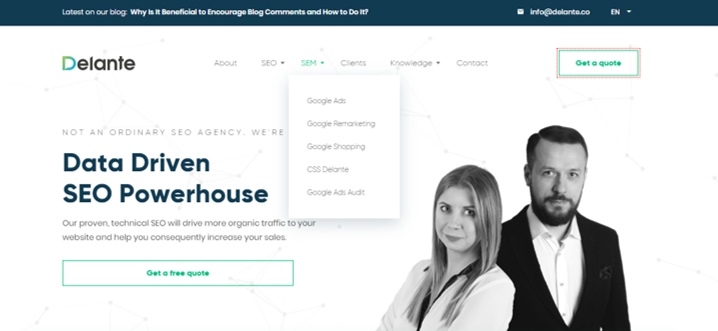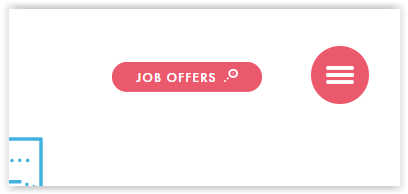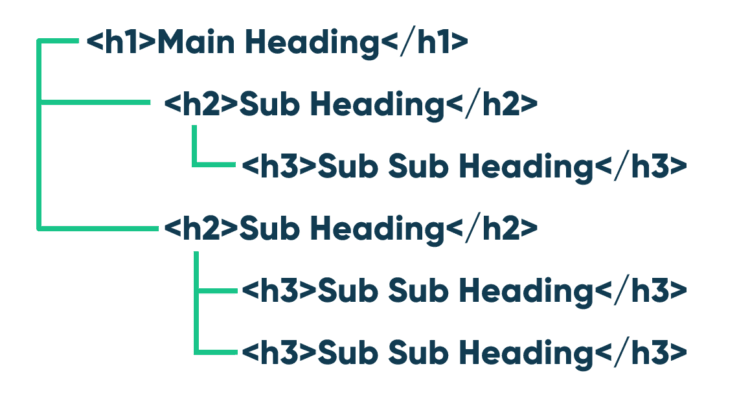7 Tips on How to Create a Perfect Homepage

Your homepage is frequently the first element seen by a person visiting your website. Therefore, it should be designed in a way that encourages users to check out your offer or make an inquiry about services. How to create a perfect homepage?
Table of contents:
- Why Is a Homepage So Important?
- A One-Page Website – Pros and Cons
- How to Develop a Quality Website Homepage?
- An Ideal Hompage – The Takeaway
Why Is a Homepage So Important?
Not every user starts browsing your website from the homepage. Very frequently visitors redirected from the search engine or social media channels enter one of the subpages right away. Still, you should devote a lot of attention to your homepage SEO. A reception desk is a place that decides about the first impression of people visiting your company office and homepage is such a reception desk of your website.
If you discourage users with unintuitive, chaotic layouts, poor quality graphics, or other imperfections, they can automatically lose interest in your offer. The homepage matters because of your:
- Image – when users enter your website, they start to form opinions about it. If they have problems with accessing basic functionalities or pieces of information about your company, they may quickly feel disheartened. This won’t help you build a positive brand image. Your website should look well on every device. Visiting it should be a pleasure so make sure you provide big, quality photos, minimalistic design, and transparency. Take care of an appealing layout. If your website disappoints users, don’t expect them to buy your products or send an inquiry concerning offered services. An increased bounce rate, lower conversion rate or shorter web session time are other potential consequences of a poorly prepared homepage.
- SEO – the homepage should be optimized to meet the requirements of the search engine. This means paying attention to a number of factors. When it comes to best SEO practices concerning homepages, it’s recommended to provide links to categories or even subcategories. Link to selected products or important subpages of your platform. Preparation of an appropriate amount of content, unique meta tags, photo descriptions, and other elements is the next step. A suitably developed homepage has an impact on the entire SEO process.
When working on your homepage, remember that it should meet the expectations of users, not solely yours. At the same time, it shouldn’t be overloaded with content. “The more, the better” principle doesn’t always work. Too many links and texts can make visitors feel lost. Users should be able to access the necessary information as quickly as possible. Otherwise, they may decide to leave your page.
What to Keep In Mind?
When developing the homepage of your website, you should keep in mind a few important aspects such as:
- Providing eye-catchy links – links to particular subpages of your website should be easily noticeable. Otherwise, it’s rather unlikely that users will access particular pieces of content. At the same time, it’s crucial to provide appropriate titles that inform users what to expect when clicking on a specific subpage. Maybe it’s worth underlying the link once visitors move the mouse over it?
- Providing an internal search engine – this is a must-have functionality of all e-commerce and information websites. If you forget about this element, users may leave your website immediately. Apart from the implementation itself, it’s also crucial to place the search engine in an easily noticeable place. On most websites, it’s located at the top of the homepage, just in the middle.
- Using graphics and images to highlight important content – usually, key information that’s the most important for Internet users is promoted on the homepage of popular services with the use of relevant graphics and images. However, remember not to overuse this solution as visitors will be confused and they won’t know which piece of content to focus on. Moreover, you should beware as the application of a number of pictures and videos can have a negative impact on website loading time.
- Providing information about the company – users want to know who is responsible for a given page. It’s particularly relevant in case of websites that sell products or present their offers. Create the “contact” tab and provide the most necessary contact details. It’s also a good idea to create the “about us” subpage. A website footer is a perfect place to link to the abovementioned elements.
- Ensuring efficient navigation – making it easier for users to access individual subpages is one of the main objectives of your homepage. The navigation bar should be located in a well visible place. Individual category descriptions ought to correspond to the content found at a specific URL.
A One-Page Website – Pros and Cons
The site has a menu, or to be more precise – a table of contents. It’s enough to click on the element that’s of interest to you to access all the necessary information. This solution was implemented mainly because of mobile users who find it more comfortable to use one-page websites. All they need to do is to click on a particular item in the table of contents and they’re redirected to a specific segment without having to scroll the entire site.
One-page websites are perfect for creating a product page or a work portfolio.
It’s a top-quality solution for users browsing the net on mobile devices. What are its main advantages and disadvantages?
The Greatest Pros of One-Page Websites
- User-friendliness – it’s possible to access necessary information quickly and easily.
- It loads only once – you don’t need to open individual subpages to get familiar with subsequent positions.
- It facilitates web browsing on mobile devices.
- Low development costs – the development of such a page is usually a much more budget solution than the creation of classic websites.
The Greatest Cons of One-Page Websites
- Poor transparency – this applies to pages that weren’t developed properly and offer too much content. In this case it’s mandatory to apply anchors that make it easier for users to efficiently and effortlessly find needed information. Without this solution, there might be problems.
- Difficulties in building website visibility in the organic search results – doing SEO for such a website is quite a challenge. If you provide a range of various services, it would be best to prepare custom subpages for each position in your offer. In the case of one page websites, everything is on one page.
- High page weight may translate into a relatively long website loading time.
How to Develop a Quality Website Homepage? 7 Elements To Keep In Mind
Developing a perfect homepage requires paying attention to a number of elements such as:
1. Website Menu
Before choosing your website menu, you have to determine the objective of the page. Are you going to run an enormous store or a company website with a few subpages? The company website menu is a piece of cake but if you plan to create a website of a sizable store, the navigation should incorporate all the categories and subcategories. Therefore, the task gets a bit complicated.
It’s crucial to devise an appropriate menu structure, think about names, and remember about users. The menu has to be understandable and intuitive. There are different types to choose from:
- Horizontal – in the form of a bar at the top of the page. Frequently applied in case of small websites.
- Horizontal with dropdown submenus – when you hover the mouse over the menu, you see a submenu with subcategories.
- Side – frequently used in online stores. Clicking on a link or hovering over it may bring up a list of subcategories. Usually, it’s located on the left side of the website. The main advantage of this solution is the possibility to include numerous subcategories. On the other hand, the main disadvantage is that it takes up a lot of space.
- Hamburger menu – this is an extremely simple solution that works great primarily in the case of apps and websites designed for mobile devices. The name was inspired by the resemblance of the icon to popular fast food. A menu appears when you click on the icon.
2. Content
Your homepage should contain relevant content. According to our report, lack of content on the homepage is one of the most common e-commerce mistakes – our audit shows that the issue applies to as many as 59% of stores.
Your homepage content should primarily inform users about the visited website. At the same time, everything should be written in a way that makes it easier for people to find necessary information. Homepage content should be at least 300-500 words long and it ought to incorporate keyphrases relevant to the business. When writing, keep in mind users and search engine robots. Provide links to crucial categories or service descriptions. Offer content in an attractive form – avoid plain blocks of text as they won’t attract users’ attention.
3. Headers
Make sure that your homepage has a proper header structure as this is important both for users and SEO. As many as 90% of websites we analyzed made mistakes and applied headers incorrectly. Headers should contain keywords – pay particular attention to the H1 one as it informs bots about the subject matter of your site. Take a look at a model website header structure below:
Check out: What is a website header?
4. Title
Optimize the <title> tag of your homepage, as it’s an important ranking factor. It should consist of 55-65 characters and no more than 600 px. It must contain the most important keywords related to your domain e.g. “fishing store” (provided you run a store offering such products). Include your brand name at the end of the title. If the title is longer than 600 px, Google will display 570 px and an ellipsis. Benefit from this tool to check your title length.
5. Meta Description
Although website description has a scant impact on page visibility in the search results, it can affect CTR (click-through rate). Consequently, it should be unique and appealing. It’s also important to include a CTA (call to action) in it. In this case, the appropriate length is up to 160 characters. The description must contain information about your offer.
6. Linking
The homepage is usually the most powerful when compared to the remaining subpages. If you want to improve the visibility of a specific category, provide links to its subpage on the homepage.
7. UX
The homepage should be optimized properly to meet users’ requirements and make a positive impression at the first point of contact. Provide the most relevant information that will be displayed at the top of the website without scrolling. Individual website elements should be located in places where users expect them to be. Offer user-friendly navigation which allows easy access to categories. Apply meaningful colors – use green to indicate that activity was completed successfully or yellow to draw attention to an important notification.
An Ideal Homepage – The Takeaway
Taking your time to develop an ideal homepage can support the SEO process of your website and improve your brand recognition. Therefore, it’s worth doing your best to refine the homepage so that it brings you as many benefits as possible.











Interesting insights, I feel like companies nowadays either neglect the first page entirely or make homepage totally minimalistic. Both approaches hurt their site’s performance – sure, minimalistic website is cool but where’s your content that could get your ranked?